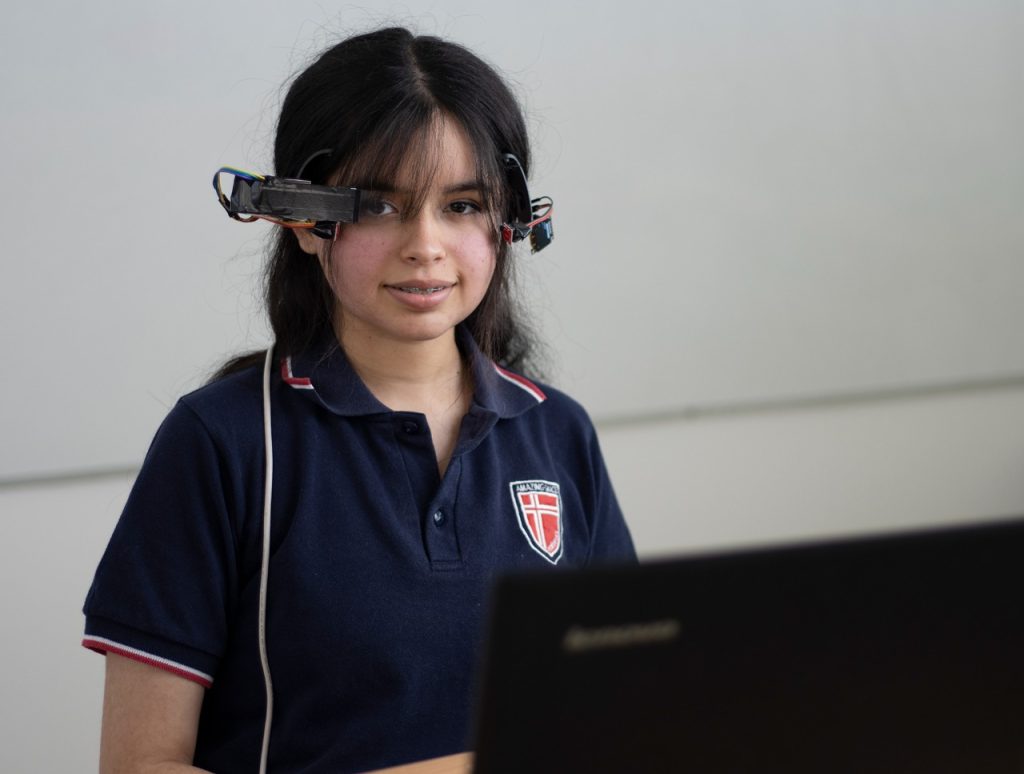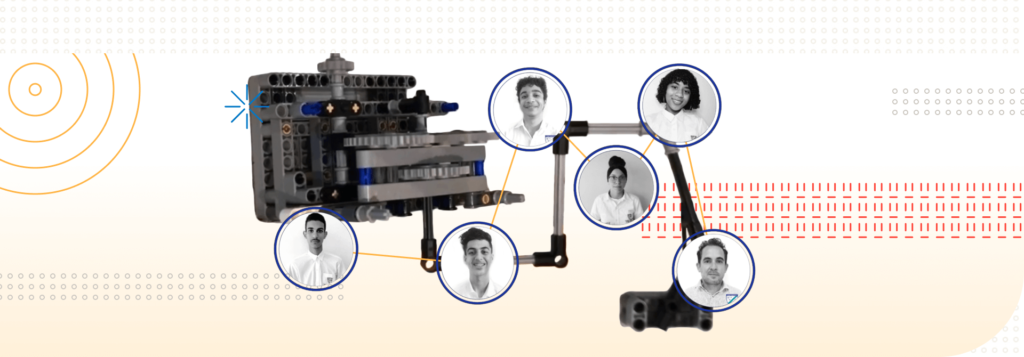A device that detects facial movements to select words and communicate with others while simultaneously translating voices into words may seem like an invention distant from everyday life. But this was the invention of two high school students from Coquimbo, Chile. They had never worked with this type of technology before and started from just an idea. With a lot of dedication, they became the country’s finalists for Solve for Tomorrow 2022.
The small team of the project was called “Talk” and were all female. The students were 17 and 18 years old and were in the fourth year of secondary school, the last year of compulsory schooling. The mediator teacher was Carolina Ríos, who teaches Mathematics and is currently the leader of the school’s Innovation and Entrepreneurship Program, where students are encouraged to think of solutions to real problems. “Since I was given the program, I began to study more about other topics and paths, leaving my comfort zone,” says the teacher.
While they were doing the program’s activities, student Mia Santelices participated in a sign language workshop. “And that’s where this world opened up for her; seeing that there were people who couldn’t communicate,” said Ríos. Through online research, the students found that nearly 360 million people in the world suffer from hearing loss, according to the World Health Organization. And only 70 million use sign language. So, what happens to the rest?
They observed that many people resort to lip reading to understand speech. But at the time of the project (2022) there was the Covid-19 pandemic and due to the use of face masks, this type of communication was even more difficult.

References showed the way, but they made adaptations
At first, they thought about developing a mobile application, but soon they concluded that the best option was an independent device. As the research progressed, they discovered a headband, with Arduino technology, that allows a deaf person to communicate by looking at a screen, where predefined phrases begin to appear. They were also inspired by the mechanism that the scientist Stephen Hawking used to communicate. “They improved this first idea, to make it more comfortable, by trial and error,” she says. “They changed parts so that the prototype was lighter; like using a smaller charger,” she adds.
Finally, the prototype continued to work with Arduino robotics and a voice recognition module. Its interface works both ways: the hearing-impaired person can express themselves using the movement of their cheekbones. With the right cheekbone, a cursor is monitored on an OLED screen (which has lights that use self-emitting pixels to form images). With the left cheekbone, words are selected to be able to put together sentences. Meanwhile the other person can speak and everything that is said is transcribed on a transparent lens so that the receiver can understand.
They also took care of the sustainability of the creation and chose recycled polymers for the device. The sensors and the screen can also be reused outside the product.
Testing at school was the final stage
Before traveling to the final Samsung Solve for Tomorrow event in Santiago, they were able to test the prototype with a hearing-impaired student at school. “The student gave his impressions. He liked the prototype but said it could be lighter. It was a suggestion that the students took notes on to improve in the future,” she explains.
The “Talk” double then went through all the school’s classes presenting the project. “It was a very interesting stage because the girls were very motivated and as they went from class to class, they were getting better at learning their pitch for the final of the program,” Ríos emphasizes.
It was clear that they had a good command of the product, which was another factor in building confidence. Their dedication to the project throughout the year gave them this confidence, says teacher Carolina Ríos.
Partnerships and independent research compensate for knowledge gaps
According to the teacher, although the school was already working with a focus on entrepreneurship and innovation and offered great support for the project, there was no experience with technology; not even robotics classes. “They had to be autodidacts because it was not a subject we taught them at school,” she says.
However, the young people had help from many adults, such as their families and the Solve for Tomorrow mentors. “They are very resolute students and seeing how motivated they were, the adults began to help out, often preparing themselves to be able to help a little more,” she recalls.
The alliance with the University of La Serena was fundamental. They made 3D prints of parts for the device since the school did not have this equipment, and they helped with the design of the prototype, for example.
The teacher believes that the girls’ experience is now a model for the school’s younger students. “They paved the way. I feel that these initiatives make the children grow in their soft skills and knowledge,” she says.




